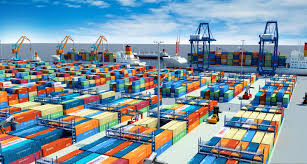Today I will talk about losses in marine insurance and especially emphasize general and specific losses as well as loss determination and how to classify losses. Concept of loss “Loss is damage and loss of the insured object caused by insured risks”. In the previous article, Anh mentioned marine insurance risks and gave a small example related to loss and risk. If you are not clear, you should read the first few lines of the article Risks in marine insurance.
Marine Insurance Loss
Marine Insurance Loss
Classification of losses
Insurers have proposed two types of losses based on this basis: total loss and partial loss. Listening at a glance, you already understand quite a bit, right?
1.1. Partial loss:
Loss or damage to a part of the subject matter insured in an insurance contract.
Partial loss, Total loss
Partial loss, Total loss
In this section, we will divide into two types of losses: Particular average and General Average.
Particular Average: Is the loss of each insurance benefit caused by natural disasters or unexpected accidents. For example, on the journey the goods are exposed to rain, wind, or seawater that causes mold and mildew on the goods. In this case, the goods owner must take responsibility or claim compensation from the insurance company and cannot allocate this responsibility to the owner. ships or other shippers. The loss in this case is a personal loss.
General average: is the damage caused by the intentional expenses or sacrifices of those on board to save the ship, cargo or freight from accident during the common voyage at sea. There are 2 principles to notify this as general average.
Principle 1: general loss occurs for the general safety of the ship owner and goods at sea.
Principle 2: Expenses incurred to avoid danger to the ship or cargo, although these costs are not absolutely necessary but are a direct consequence of general average (common benefit), are also considered general average.
Normally, general loss is divided into two parts as follows
General average sacrifice: are damages or expenses incurred as a direct result of a general average action. For example, if a ship has to throw goods into the sea because of a big storm to save the ship and save the entire journey, then the goods thrown into the sea are sacrificed as a general loss.
General loss expenses: must pay expenses to a third party in case of rescuing the ship, and escape expenses for the ship to continue its journey. For example, the following costs are considered general average costs: costs for the ship to enter and exit the port of refuge, costs for storage at the port of refuge, costs for repairing damage to the ship, and increased costs. more about fuel, ….

